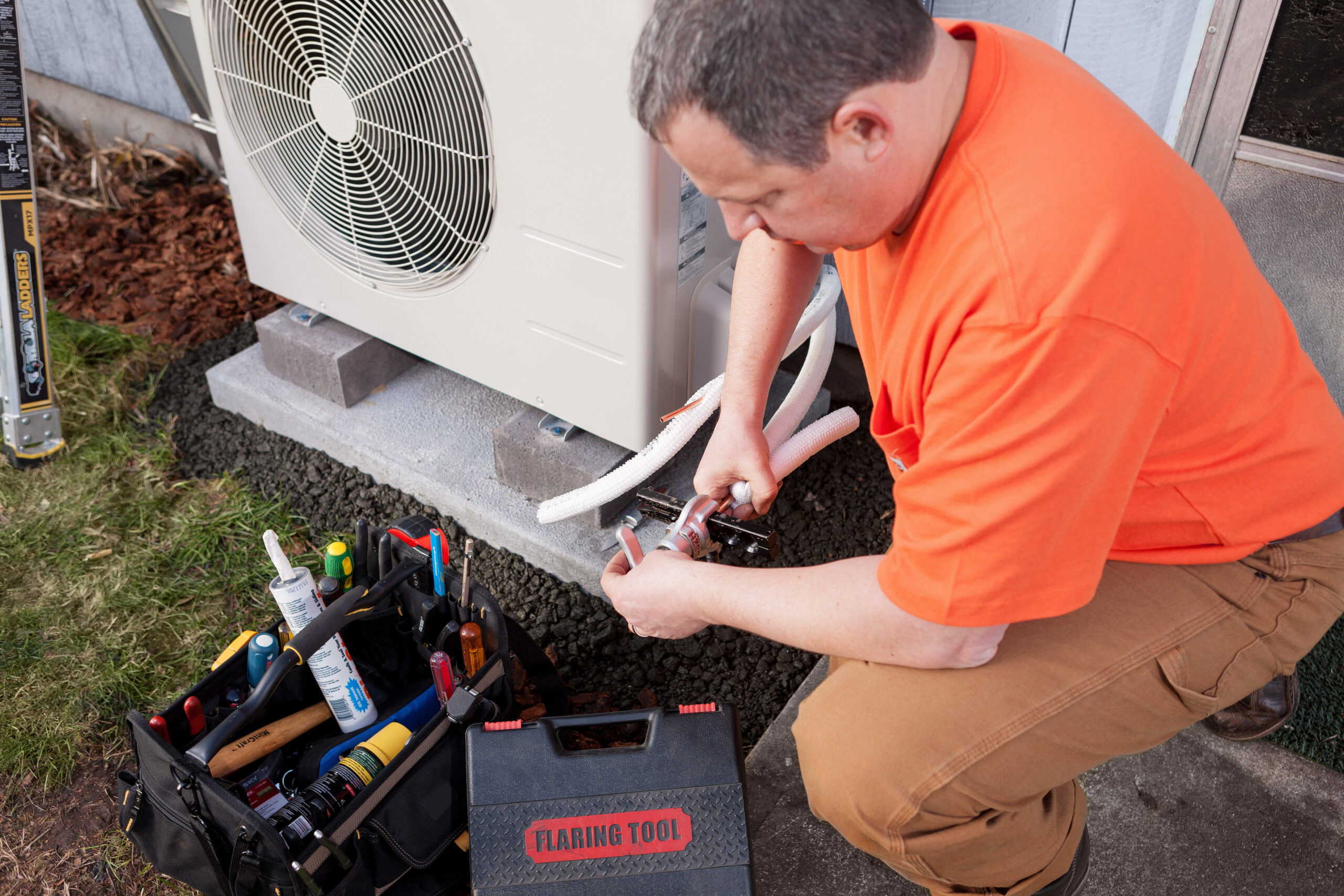Market Transformation in a Maturing Heat Pump Market

Market Transformation in a Maturing Heat Pump Market
By Debbie Driscoll and Christopher Dymond
Note: This article was originally published in the 3rd Quarter 2024 issue of AESP’s Energy Intel.
The HVAC market is undergoing a tremendous transformation. Heat pumps are becoming ubiquitous across all areas and climates of the country, and consumer awareness of the benefits of these products is skyrocketing. And while adoption is seemingly at a tipping point there are still many opportunities for energy efficiency professionals to steer market forces to greater savings and innovative applications of advanced heating and cooling technologies. These savings and innovations will only be available in a timely way to a mass market if an expansive market transformation approach is applied – one that employs strategies beyond traditional upstream and midstream interventions. A broader, market transformation toolkit will drive increased savings and greater accessibility and affordability for all households and at an accelerated pace. The caveat is that this work takes more than a village and will not happen without significant collaboration from energy professionals from across the country.
Transforming the Northwest Mini-split Market
In 2008, the Northwest Energy Efficiency Alliance (NEEA) launched a pilot to demonstrate the viability of inverter-driven, mini-split heat pumps to displace electric resistance heat in existing Northwest homes. Prior to this pilot, mini-split manufacturers’ perception of the Northwest market was that it was virtually non-existent. The perception that the entire U.S. represented a limited market for sales of residential mini-splits resulted in no proactive manufacturer outreach and mini-splits in short supply throughout distributors across the country. Installers in the Northwest had minimal experience with mini-split installation and no access to training. When NEEA launched the mini-split initiative at full scale in 2010, the alliance employed a range of market transformation activities to accelerate the adoption of mini-splits in the region.
In a holistic market transformation approach, there are distinct stages, first evaluating barriers and opportunities, then identifying and refining strategies for overcoming those barriers. Programs are consistently evaluating barriers and interventions and evolving strategies based on market response. With NEEA’s mini-split initiative, the initial barriers were the obvious ones: lack of availability, contractor skill, and customer awareness. NEEA had to build the regionwide foundation required for future utility programs from the ground up. NEEA initially started with manufacturers, distributors and contractors to make products available, and build contractor trust and installation skills with the products.
NEEA’s iterative market transformation process helped expose a new barrier: variability of heat pump performance and the ability to distinguish high-performing units. In response, NEEA began working with North American partners to study and develop a load-based test and rating procedure for residential air-source heat pumps and air conditioners.
In the last 5 years of NEEA’s mini-split program, the low hanging fruit of initial market transformation interventions, in partnership with Northwest utility mid and downstream programs’ incentive and awareness efforts, had yielded impressive results. The alliance’s flexible and responsive approach permanently transformed the market for ductless systems in the Northwest. In a 2021 survey, 96% of HVAC installation companies in the Northwest reported installing ductless systems, and multiple Northwest distributors won top national accolades from their manufacturing partners for top sales performance. These installers also reported they “always” or “often” recommend a ductless system when applicable. NEEA’s 2022 Residential Building Stock Analysis reported that 12 percent of Northwest single-family homes had one or more ductless mini-split heat pumps.
With evidence that utility, distributor, and manufacturer training opportunities existed and were growing without need for ongoing investment, NEEA saw opportunity for a market transformation path for more complex HVAC systems.
Leveling Up Market Transformation Interventions in Complex HVAC Systems
Heat pumps now dominate the market for electrically conditioned homes, far outpacing electric resistance and electric forced air furnace sales in both new construction and retrofits. With increases in federal and utility incentives, code and legislation activity, and heightened consumer interest, these trends are expected to continue. However, heat pumps have repeatedly failed to live up to their nominal efficiency ratings in field studies, and the factors that influence more efficient performance aren’t well understood or differentiated in the market.
In response to these barriers, NEEA has identified upstream market transformation strategies to differentiate the most efficient heat pump systems with an eye to systems that operate efficiently regardless of suboptimal design and installation. Redirecting the rising wave of heat pump adoption towards more efficient heat pumps will help reduce new system load, new peak load, and help stabilize the grid by improving the efficiency of new installed heat pumps.
NEEA’s Advanced Heat Pump market transformation initiative focuses on product differentiation and awareness of system attributes that deliver greater efficiency with low- or no-cost features, capabilities and rating methods that consistently improve installed efficiency and can be identified in a product or system specification. The program works to build alignment with other voices in the energy efficiency community, through venues like the North American Advanced Heat Pump Coalition that NEEA played an instrumental role in founding. Coalition building allows for a collective voice and shared research to influence test procedures, specifications and standards that differentiate products with the most impactful features and capabilities. The desired result is systems that deliver greater efficiency with reduced reliance on contractor design and installation choices.
NEEA aims to lock in heat pump efficiency above current standards through improvements to the federal test procedure, minimum standards across all residential multi-speed heat pump applications and permanent changes in manufacturers’ heat pump design and production. The program’s ultimate goal is to promote systems with these improvements in the Northwest so that by 2030, average installed efficiency of residential-size heat pumps is 30% more efficient than the 2017 average.
Intervening Midstream and Upstream to Transform Commercial HVAC
Leveraging upstream and midstream actors and collaboration with national energy efficiency organizations is becoming increasingly important in NEEA’s market transformation work with all HVAC initiatives. For efficient rooftop units (RTUs), the current federal standards governing commercial RTUs do not address heat recovery or shell losses. Each of these features deliver 10–40% natural gas savings beyond today’s minimum efficiency RTUs. Today these features are typically only available in customized, premium RTUs, which make up a very small portion of this highly commoditized, cost-competitive market, but widespread market adoption of these efficient features could generate annual savings between 3 and 10 million Therms by 2039.
To meet this goal, some of NEEA’s upstream market transformation strategies for efficient RTUs that incorporate tighter, better insulated shells and heat recovery include working directly with manufacturers. The alliance works with manufacturers to produce an increasing variety and volume of light commercial ERTUs at lower price point models and differentiate more and less efficient units by developing a voluntary specification and Qualified Products List. Ultimately, the Efficient RTU program will provide evidence to support a federal standard by 2030 that requires at least 20% more efficient RTUs than the 2020 market average.
Upstream and midstream interventions are also paving the way for market transformation of very high efficiency dedicated outdoor air systems (DOAS). The next step in the ongoing evolution of HVAC design, very high efficiency DOAS uses the most efficient equipment and key design principles to provide cleaner and safer indoor air, enhance indoor comfort, and reduce commercial building HVAC energy use by an average of 69%.
Despite the eye-popping energy savings that can be delivered cost effectively, the design principles and equipment are significantly different than traditional mechanical system designs, creating hesitancy among manufacturer representatives and designers. NEEA’s market transformation strategy leverages influential organizations like ASHRAE and mechanical system experts trusted by manufacturer’s representatives and the specifier community to introduce this new approach to commercial heating and cooling, help the market gain experience, and highlight the additional value to the end customer.
The availability of a key system component, heat recovery ventilators that meet the very high efficiency requirements of the system design is another barrier. The program works with partner efficiency programs across the United States to build demand for the very high efficiency equipment required in the design, and ultimately influence manufacturers to increase availability of this equipment. Already, the program has grown the qualifying product list from one manufacturer with handful of products, to nine manufacturers and well over 100 products that span price points and size categories.
Accelerating Market Transformation of Efficient HVAC with Collective Action
The ambitious market transformation goals for energy savings, load flex and decarbonization NEEA seeks to achieve with these complex HVAC systems requires alignment from energy efficiency organizations and utilities from across the country and national and international manufacturers.
Coalition building and collaboration on a national level to identify a specification or testing procedure will build momentum required to influence change that benefits us all. NEEA and the Northwest represent a strong, but mighty 4% of the U.S. population. Through alliances, there is the capacity to make a significant difference in energy efficiency and influence the product brought to market and supply chains that get products to customers.
Inspired by this article? Ready to help transform this market? Contact Debbie Driscoll or Christopher Dymond and join the Advanced Heat Pump Coalition or the Efficient Roof Top Coalition, or find out more about very high efficiency DOAS.
# # #

Debbie Driscoll Bio
Debbie Driscoll is the Senior Market Transformation Manager for HVAC and Whole Building Efficiency at the Northwest Energy Efficiency Alliance. After graduating from NC State with a degree in Electrical Engineering, Debbie started her career at Lawrence Berkeley National Labs working in energy efficient lighting. With a desire to help create the future, she earned her master’s from Stanford in Product Design. She then worked for over a decade in product design and strategy before finding her way back to efficiency to participate in envisioning and building our energy future.
Christopher Dymond Bio
Christopher is a Senior Product Manager for NEEA. As such, he is responsible for identifying new market transformation opportunities for NEEA by determining the energy and demand response potential, market barriers, opportunities to change the market, and the leverage point(s) to affect that change. His current focus on variable speed heat pumps and defining the metrics, features and capabilities of heat pumps that increase energy, demand and carbon savings.
